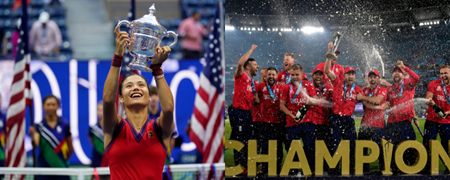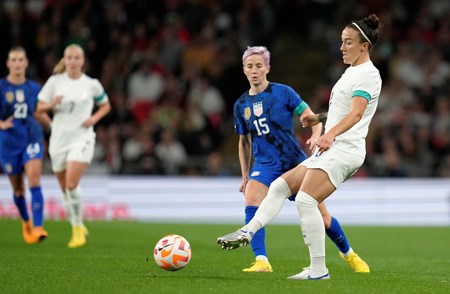Why your sport should harness content and community to reach a wider audience
There have never been more ways to reach fans, but competition for eyeballs is getting fiercer. Our Managing Director, James Dobbs, caught up with SportsPro as he looks back on 2022 to offer some lessons for sports trying to stand out with their content.
Why are DTC, OTT and owned channels more important than ever?
With the range of off-the-shelf streaming products and social channels now available, it’s never been easier to produce and deliver content directly to your audience. Similarly, the value of serving your fans in an owned environment with all the possibilities of upselling and data points that delivers is hugely appealing. The challenge is how to drive awareness of these owned channels, how to grow your audience and once they’re there how to retain them. A hardcore fan may go out of their way to find your channel, but the majority of individuals are too busy and too well served with content and need to be engaged on whichever platform they’re on; widening the funnel to capture these potential fans and driving them to your owned channel is essential… fish where the fishes are.
Presumably, that’s where Story10 comes in?
We sit at the top of the funnel, producing and delivering editorially relevant videos to over 400 media organisations every day, in every region, across every media platform. Because of our resources and reach, we increasingly found brands and federations coming to us to leverage these capabilities.
That’s why we launched Story10, it was important for us to differentiate between our editorial news business (SNTV) and our commercial brand and federation business (Story10). It’s vital we keep “church and state” separate to ensure our journalists retain full editorial integrity and our media partners retain full confidence in our news service. However, we do lean on our distribution network, and the increased content generated via Story10 provides additional value to our SNTV customers, so the two areas are mutually beneficial.
What are the main consumption trends you’ve noticed?
Soccer and the major US sports continue to drive the biggest numbers; they have the most engaged global fan bases and their premium revenue streams allow them to re-invest in their content and comms, so it’s a self-perpetuating value cycle. Due to the well-documented fragmentation of the media landscape, other sports are having to be more creative to retain and grow audience share. The increase in content produced away from the field, such as fan-focused or behind-the-scenes video, is a lot less restricted and the focus on the human narrative appeals to a far greater audience than focusing on the sport alone.
Whilst brands and federations now understand this and are producing an increasing volume of lifestyle-led video, many remain protective and make it available only to their rights holder partners or their owned and operated channels, hugely restricting the potential audience reach. This goes back to the point about widening the funnel and perhaps a change in perspective to view this secondary (non-live) content as having a greater long-term value as marketing material for wider engagement and not an immediate revenue driver via Subscription Video on Demand (SVOD) platforms or in rights holder contracts.
"content is king” is changing to “content and community is king”
Athletes also remain one of the single greatest resources that a federation has and they often come with a larger individual following than the federation itself, and whilst many organisations now realise this, the use of athletes as a promotional and engagement resource is still one that is underutilised in a storytelling capacity.
Does a better balance need to be struck over rights exclusivity?
I think there’s a distinction to be made between live rights and non-live (secondary) rights. Broadcast rights fees are and will remain the primary revenue stream for most federations, and as such I fully appreciate the importance of retaining and satisfying broadcast partners. Additionally, sales execs have targets to hit and it’s only natural that often all rights and assets are included in a broadcast contract, often exclusively, to maximise the potential revenue from that partner.
But from a longer-term growth perspective, I think there’s a strong argument that secondary rights, whether it be archive, digital highlights or news access, remain non-exclusive as they can provide greater value from sponsorship opportunities, allowing federations to reach new fans outside of their broadcast partner. In fact, in some cases even a rights holder partner themselves doesn’t want exclusivity; we had a recent situation where a governing body refused to give us secondary rights because they were so concerned about any conflict with their rights holder in that territory; 2 weeks later the rights holder themselves approached us to help them amplify the event via 3rd parties in their territory because they realised that the greater the awareness of the event, the more people would come and watch on their channel. In the UK, Amazon giving the 2021 US Open Final to Channel 4 and similarly Sky sharing its recent ICC T20 Men’s World Cup final with Channel 4 are good examples of rights holders understanding that a rising tide lifts all ships.

Also, with pressure on broadcast deals, sponsorship revenue plays an even more important role, therefore retaining rights to drive more eyeballs to an event and providing sponsors with the rights to activate, delivers increased value without having to conflict with your rights holders.
There’s still a legacy approach to many secondary rights and one where there needs to be more understanding and courage to appropriately value them in negotiations.
Should women’s sport be prioritising reach or revenue at the moment?
We use the term “women’s sport” as a collective, but of course, they are just separate sports that happen to be played by women, and to that end, it’s understandable that some are at different stages of development to others. Soccer is the largest sport in the world and so it’s unsurprising that women’s soccer, buoyed by the success of this year’s EURO’s and the growth of the NWSL is generating significant traction and engagement. However, I think the headlines and successes around women’s soccer are slightly skewing the landscape somewhat and there are still institutional challenges across other sports.

An interesting question is if and how much a women’s sport should partner with and leverage their more established male equivalent competition. Should they share broadcast partners, should they share sponsors, should they unbundle? One might have hoped or expected that there would be templates for success by now, but the truth is it’s still too early to tell. Both the WSL and the Tour de France Femmes have achieved strong viewing numbers by ensuring their competition doesn’t clash with the men’s and as such their product has the oxygen to thrive and attract media attention. These viewing numbers in turn generate greater sponsorship value. The W Series chose the opposite strategy and joined the F1 schedule, and whilst there were likely several reasons for its lack of success this season, the fact that its media rights were subject to the same restrictions as those of the F1 certainly meant that their ability to generate engagement and create a narrative was significantly curtailed.
Reach versus revenue is an equation across men’s and women’s sports; they are not mutually exclusive and it’s important to do them in tandem. Sponsorship has an important role to play in the early stages of a growth cycle and in this women’s sports are well placed as there’s a huge untapped female and family audience that sponsors want to connect with. Meanwhile, with broadcast partners, a recent YouGov report stated that “less media coverage was the primary reason consumers do not engage with women’s sport”, so a decision needs to be made to weigh and balance the value of a potentially larger revenue offer from a pay operator and the engagement benefits of a Free-to-Air (FTA) partner. If they choose to go behind a paywall, they need to ensure they have the tools to continue reaching new audiences.
Sponsorship deals deemed “unethical” have increasingly come under the spotlight recently. Amid accusations of greenwashing etc, will these deals always attract a backlash?
I think sports fans need to be honest about what they want. If you’re a sports fan, do you want your sport to be able to stage premium competitions, pay athletes fairly and invest in grassroots initiatives? If so, then that revenue has to come from somewhere. With the current macroeconomic issues and with brands having more platforms than ever on which to spend their marketing budgets, a federation is not always in a position to choose their ideal partners. As such, it’s essential, doubly so if partnering with a sponsor from a hot topic industry, e.g. energy, alcohol etc., to have a well-constructed comms strategy, to get out in front of the discussion and to invest properly in communicating why and how this partner can be an instrument for good. Sports fans, especially younger ones are too savvy to buy into traditional badging or PR activations, therefore authenticity and longevity are key to gaining acceptance. VISA’s a great example of this; having been a key investor and supporter of women’s soccer for so long, they now have the credibility of a stakeholder in the sport as opposed to simply a sponsor.
Federations also have a responsibility to push their partners to align with their own values and those of their fans and increasingly we’re seeing specific KPIs related to ethics, values and industry practices being included in sponsorship contracts.
More broadly, what are you predicting for 2023?
Due to some of the topics I’ve touched on, diversification of ad revenues, tightening of rights fees, and consumer spending slow down, I think 2023 will prove a challenging year and the ability to engage new fans and widen audiences’ bases will be essential.
That said, we’ve seen Netflix recently bid for F1 rights, and with Disney, Amazon, Discovery, and the other major channels under pressure to grow audience share and subscription/ad revenue, there could well be healthy competition for sports rights and as such some fee inflation, certainly for the premium properties.
Sports fans, especially younger ones are too savvy to buy into traditional badging or PR activations, therefore authenticity and longevity are key to gaining acceptance.
What is there to be optimistic about?
Societal issues such as gender equality and sustainability are now becoming entrenched in the narrative of most sports and brands, which is a real positive.
There’s also a host of major events in 2023 to look forward to such as the FIFA Women’s World Cup and the Men’s Rugby World Cup amongst many others and these offer federations and brands great opportunities to win over a whole new audience.
I also think that the adage, “content is king” is changing to “content and community is king” and we’ll see an increase in fan-sharing platforms, both from federations owned and independent, and the proliferation and commercialisation of user-generated content (UGC) will continue. It’s cost-effective, it’s fan led and it’s authentic… that ticks a lot of boxes.
Find out more about how Story10 can help drive your brand's success by contacting us today.
To read SportsPro article here.




